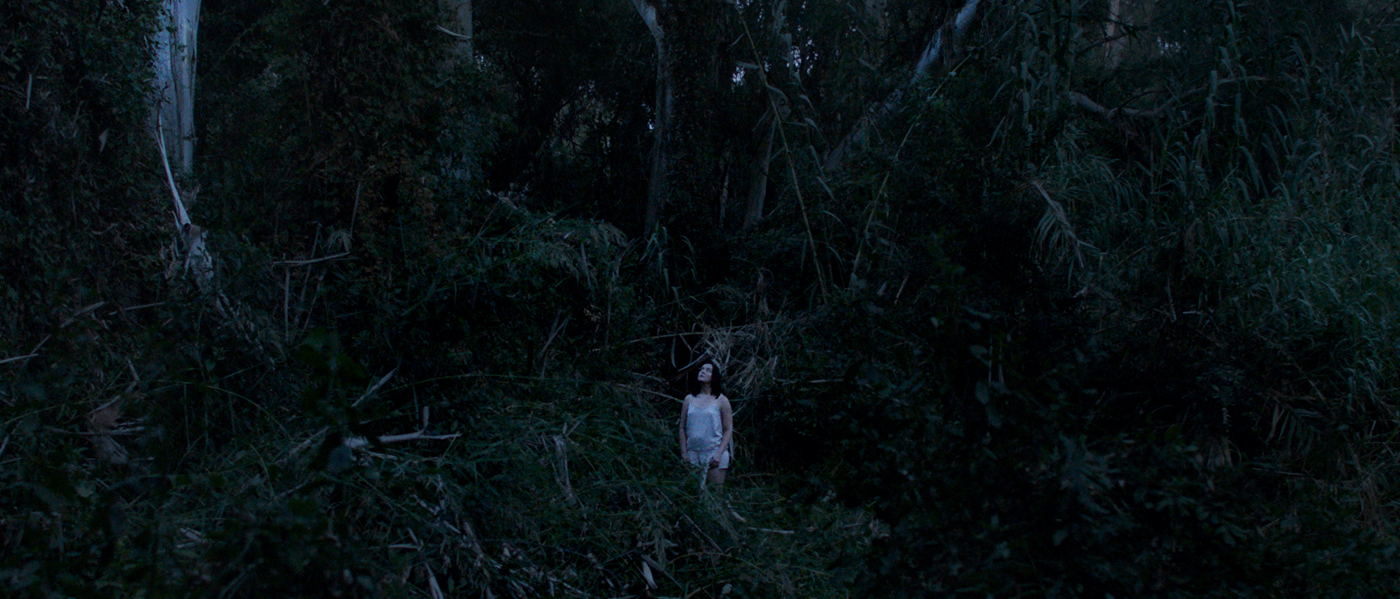About Midnight Skin
by Marie-Pauline Mollaret

by Marie-Pauline Mollaret
An ambitious and sophisticated genre film, Midnight Skin follows the protagonist as he suddenly morphs into a plant; always at a distance, it is the masterful portrayal of the propensity of dreams to gradually corrupt reality. Swiftly changing from a science thriller into an existential tale, the film dives deep into the intense feeling of loneliness among city dwellers and reveals the unscathed desire that comes to the surface under the bark of habit.
Interview with Manolis Mavris
"The movie is an introspection of the theme of fear of isolation and a commentary about the acceptance of the identity of the subject. The idea was the result of a nightmare that my mother described to me. She dreamt that some parts of her body had turned into tree branches. In between consciousness and unconsciousness, before recovering from sleep and completely restoring her thought, she was unable to remember how the human body functions. Based on this idea, I composed a story where the heroine’s nightmare surpasses the limits of the imaginary and infiltrates her reality.
Looking at my work in retrospect I understand there are common themes and patterns in which I return to almost instinctively. My films - at least until today - seem to circle around the same subjects: that of loneliness and the connection of the imaginary with the real.
Fanny (the main character) is a lonely person who “deserts” her human nature and ultimately accepts a “new way of existence”. She gradually turns into a tree. Having as a thematic starting point the sense of alienation, the movie is an allegory about the struggle of a lonely human being towards self-awareness.
The metamorphosis occurs through her reoccurring nightmare that is a product of her subconscious. It resembles an autoimmune illness that is manifested as a symptom of her loneliness. The reaction to the inevitable that is on its way makes her seek sociability. Fanny is “violently” forced to come out of her house and seek communication with other people. During her “journey” Fanny realises that this is a natural development that is impossible to contain; instead she simply has to accept and understand it.
In this character I find myself deeply involved with. She is a person that does not stand out, she feels alienated and has no true connection with others. It is a quiet story.
The psychoanalytic thriller is something I've always been interested in. In Midnight Skin the element of suspense is strong. The narrative layers of the story appear cryptically in small doses creating anticipation and agony for what’s to follow.
I'm intrigued by the nightmarish and the feeling of confinement - but not purely that. In the cinema that I aspire to make, I am interested in the cross-genre (the transition from one film genre to another). For example in Midnight Skin, while the story begins as a thriller, in the middle of the film the narrative tone changes. The pace becomes slow as the heroine wanders around the city of Athens. The genre of the film becomes more poetic giving the story a philosophical and existential dimension. Accordingly, Brutalia was a blend of different genres such as thriller, black comedy and a little bit of musical. I consider this decision to be a cinematic identity that is consistent with my personality and my constant mood changes.
The visual language of the film uses images of the human body that are displayed in parallel and are intermingled by use of montage with parts of the tree. We watch surgical operations, we focus on human wounds, the camera records the flow of blood in the veins. The filmic recording of the functions of the human body is done in an abstract way in juxtaposition with plant functions: the inside of the skin is paralleled with the tree bark, the inner functions of the human body with the hollow and the roots of the tree.
Like every film of mine, Midnight Skin was entirely storyboarded. Every shot had been pre-decided and locked, long before the shooting. In most of the scenes the camera is hidden behind elements (like windows or furniture), observing the subject from a distance, thus giving us the impression that the character is being followed."